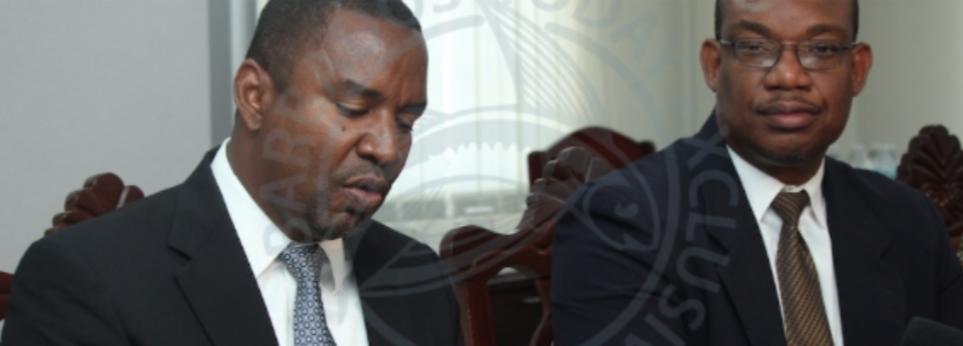
The Barbados National Trust has the lawful responsibility of identifying Barbados’ historical treasures, for their preservation. They examined the underground building at Fort George, and found nothing of historical significance to deserve being listed. Their sorry excuse was that they were given a choice of either its complete demolition, or providing water to Barbadians.
It took a special type of blind trust, for the National Trust to believe that those were our only two options. The BWA could have placed their new water tank at a lower elevation west of the underground building. If the BWA claimed that they needed the additional height, then they could have built a tank with a smaller diameter and greater height, or they could have used an elevated tank.
Even if the BWA insisted on constructing their new 1.5 million-gallon water tank over the priceless international treasure, they could have done so. How? Because the building was so exceptionally designed and built, that it could have easily supported the weight of 1.5 million gallons of water plus the tank.
A comfortable factor of safety used when designing foundations is 3. Which means that the foundation can support 3 times the maximum expected load. The underground building could have supported over 4 times the entire weight of the full water tank. Therefore, not only did the building not have to be demolished, but the marvel of having the building supporting 1.5 million gallons of water would have proved its exceptional design.
After the BWA stopped all demolition, the Barbados National Trust’s sole responsibility was to get the building listed and have their plaque installed – nothing else. Had the National Trust performed their basic duty, then the BWA would have been forced to justify the lunacy of demolishing one of the most important international heritage buildings on this planet, to the Town and Country Development Planning Office.
If the BWA demolished a listed building without Planning permission, then the recently passed Planning and Development Bill makes the person at the BWA who ordered the demolition, and the Contractor, liable to a fine of $500,000, or imprisonment for 10 years, or both. By colluding with the BWA to destroy this exceptional building, the National Trust denied the Planning office their critical role of representing our interests.
The Barbados National Trust failed Barbados, and the international community of nations, by choosing not to have the building listed. The National Trust had no business negotiating with the BWA in secret, to completely demolish this building. The demolition contractor noted that they would never have demolished the building had it been listed. The only conceivable reason to consider demolishing such a building was if it was structurally unstable.
The demolition contractor explained that the building was so stable and well-constructed, that it resisted all of their normal attempts to demolish it. This was an engineering marvel, where even impact demolition loads were efficiently distributed throughout the building to its foundations.
This was likely one of the last buildings to be designed by one person who was both an Architect and an Engineer, where the structure was the art. Around the time of its design, the disciplines were separated, and the architect concentrated on the art while the Engineer concentrated on calculating the safe strength.
The building demonstrated the quality of work our fore-parents could achieve away from the slave master. The workmanship was exquisite. There was so much that we were supposed to learn about our past from this building. Thanks Barbados National Trust.
Since it would not be demolished like any normal building, the contractor resorted to construction methods used when excavating through hard rock. He used the heavy hammer. Still the building resisted. This wonderful building had survived generations of: colonial rule, major hurricanes, earthquakes, and misuse.
Even after its betrayal by the Barbados National Trust, it still went down fighting. There was so much redundancy in the redistribution of loads, that it simply would not collapse. It was designed to protect its occupants regardless of the amount of expected damage to individual blocks. But purposeful demolition was not foreseen.
The Barbados National Trust not only ensured that there will be no consequences for this atrocity, but they set a dangerous precedent for other developers. Namely, if anyone wants to demolish a historically important building in Barbados, just call the Barbados National Trust, bamboozle them with any nonsense, and you are good to go.






The blogmaster invites you to join the discussion.